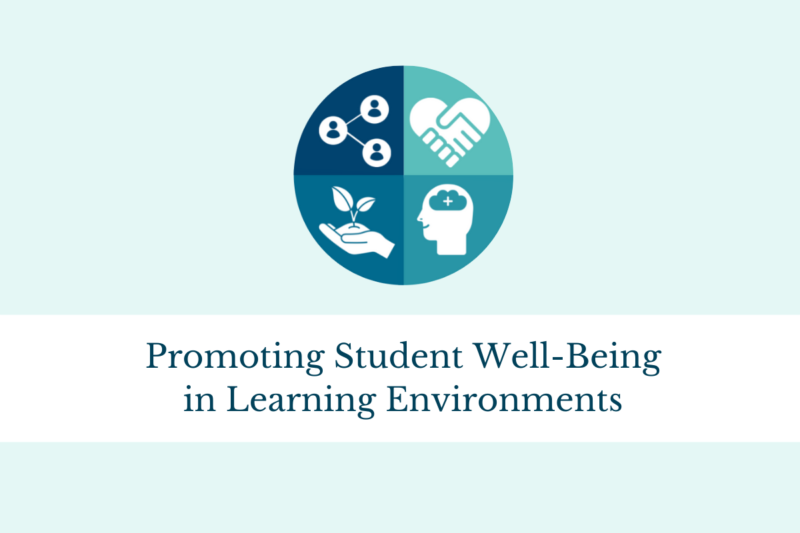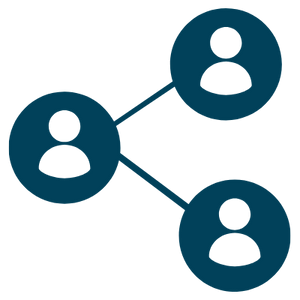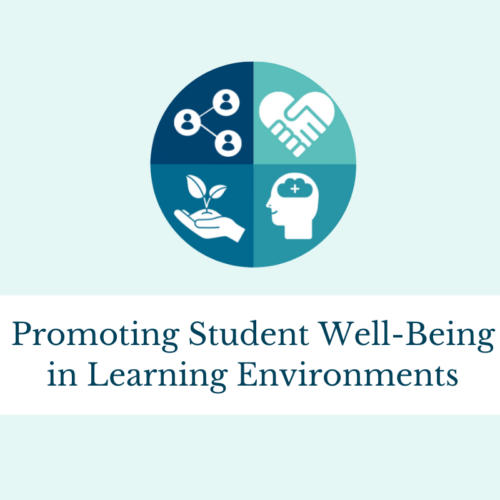
Research Spotlight: Social Connection
WashU researchers share findings about social connection in teaching.
 In the CTL’s new guidebook for instructors, Promoting Student Well-Being in Learning Environments, one of the keys to well-being that we highlight is Social Connection. We encourage faculty to build a welcoming environment by creating opportunities for students to connect with both their instructor and their peers.
In the CTL’s new guidebook for instructors, Promoting Student Well-Being in Learning Environments, one of the keys to well-being that we highlight is Social Connection. We encourage faculty to build a welcoming environment by creating opportunities for students to connect with both their instructor and their peers.
Setting a foundation for social connection can support adaptive help-seeking among students, which is key to success in higher education. Every college student will, at one time or another, require assistance in meeting a learning goal. Yet help-seeking can be challenging for many students because it requires them to admit they need assistance and support—a prospect that many high-achieving students find hard to come to terms with. In addition, help-seeking has the potential to initiate feelings of stigmatization (Karabenick & Gonida, 2017). Prior research indicates, however, that students who perceive their instructors to be supportive and to care about them may be more likely to reach out for assistance when they are struggling (Karabenick & Dembo, 2011).
Recent research undertaken by PhD student Rachel Martin, Dr. Andrew Butler, and Dr. Rowhea Elmesky in WashU’s Department of Education explores the connection between students’ perceptions of instructor care and their help-seeking behavior. They surveyed undergraduate students across campus in the spring semester of 2021 and asked: “How do you know when an instructor cares about you?”
Martin, Butler, and Elmesky found that getting to know students personally was the most-often mentioned way instructors demonstrate care for their students. For example, one student wrote that they know an instructor cares when, “they make an effort to try to get to know their student on a personal level by asking questions about their life outside of the classroom.” In addition, students wrote that instructors demonstrate care when they indicate to students that they are willing and available to provide help.
In focus groups, students related the importance of having a connection with the instructor to the likelihood they would ask for help. One WashU senior said,
“…I feel like if the instructor already at least knows my name, then going into office hours or asking for help is a more personable experience, as opposed to having to introduce myself as part of the office hours and then feeling like I’m talking to a stranger.”
Indeed, fostering social connection among students and with course instructors can positively impact students in a number of ways. “We may not think of help-seeking as being dependent on social connection,” Martin said, “but it is an inherently vulnerable experience. When we show students that we care about them as human beings who have full lives and needs for relationships with others, we increase their trust and show them they can ask for help when they need it.”
Article by: Rachel Martin
Want to learn about strategies that WashU instructors are using to foster social connection? Check out our recent Faculty Spotlights!
This post is part of our ongoing series on Promoting Student Well-Being in Learning Environments, check back in a few weeks for our next post about Compassion and Stress Reduction!
References:
Karabenick, S. A., & Dembo, M. H. (2011). Understanding and facilitating self-regulated help seeking. New Directions for Teaching and Learning, 2011(126), 33–43. https://doi.org/10.1002/tl.442
Karabenick, S. A., & Gonida, E. N. (2017). Academic help seeking as a self-regulated learning strategy. In D. H. Schunk & J. A. Greene (Eds.), Handbook of Self-Regulation of Learning and Performance (2nd ed., pp. 421–433). Routledge. https://doi.org/10.4324/9781315697048-27

